New Z1 road helmet ‘lightest helmet including rotational impact protection’ - Lazer claims
The Z1 has an illustrious lineage, with the original model seeing victory in 2015 on the Champs-Élysées, courtesy of André Greipel
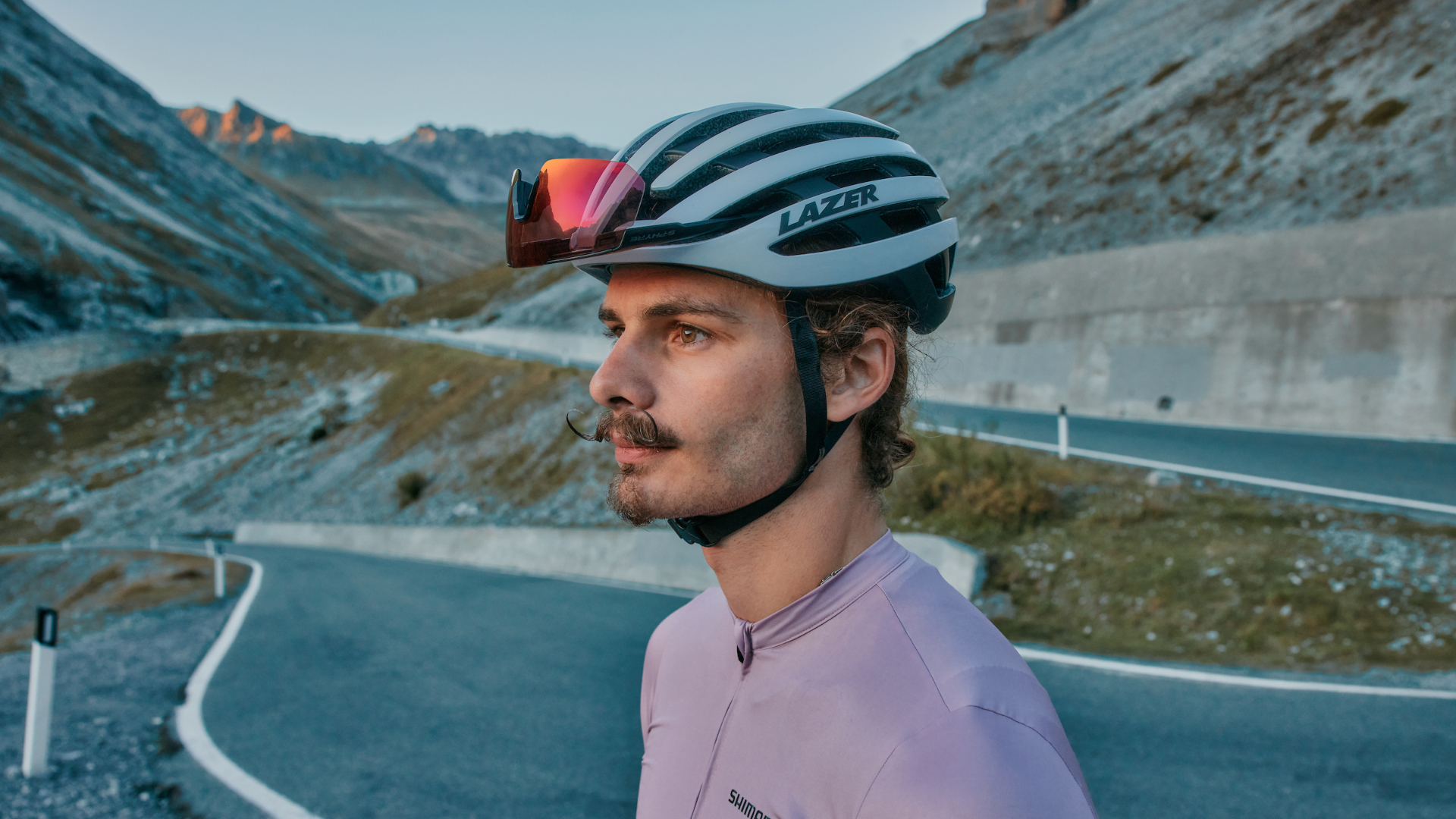

Anne-Marije Rook
Lazer has just unveiled the latest iteration of its flagship Z1 road helmet, aiming to combine aerodynamics, ventilation, lightweight and top notch safety in one do-it-all package.
In fact, at 220g claimed (236g actual), Lazer contends that this is the “lightest helmet including rotational impact protection on the market,” having received a 5-STAR rating from Virginia Tech’s independent crash protection testing.
To be sure, Lazer’s new Z1 helmet is lighter than the new Giro’s Aries MIPS Spherical helmet, which was boasted as their lightest yet at a claimed 265g in a size medium. That said, Kask’s Valegro helmet comes with its WG11 rotational impact standard and weighs a feathery 180g (claimed) in a size small - so there is competition.

Lazer says that its strategically placed vents allow for “best in class ventilation while keeping aerodynamics in mind”, although this isn’t numerically quantified. Lazer has, however, made the Z1 Aeroshell compatible, giving the CdA lowering option of blocking up all the vents - also providing some weather protection, much appreciated at this time of year.
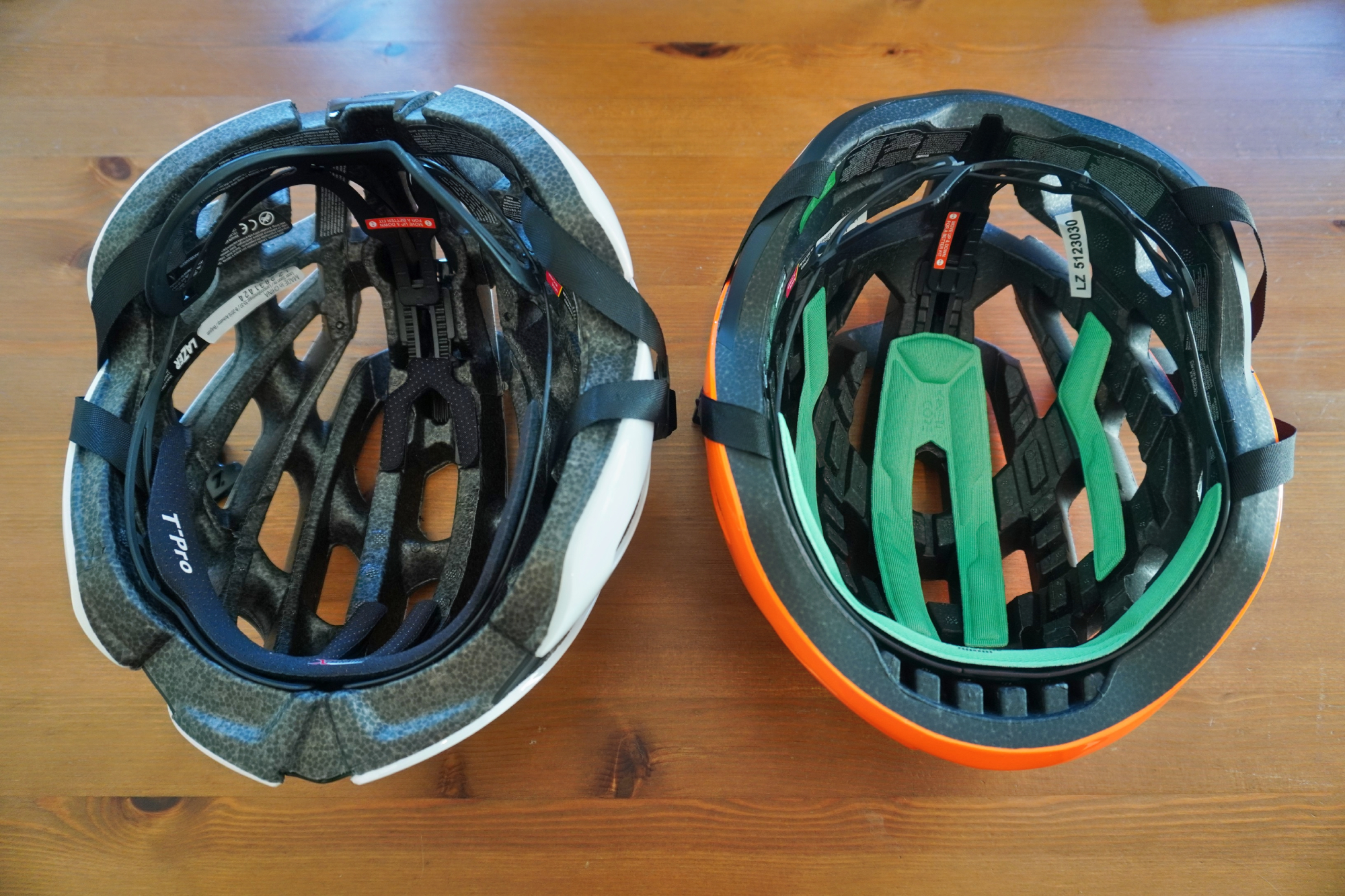
Other features include compatibility with a rear light for enhanced visibility, lightweight straps made from antibacterial and recycled material, as well as Lazer’s Advance RollSys retention system - which sits on top of the helmet rather than at the back of the head, in order to leave space for long hair in a bun or ponytail.
The Z1 is available in seven colors in sizes S/M/L and the RRP stands at $249.99 / €249.99.
First ride review - Stefan Abram
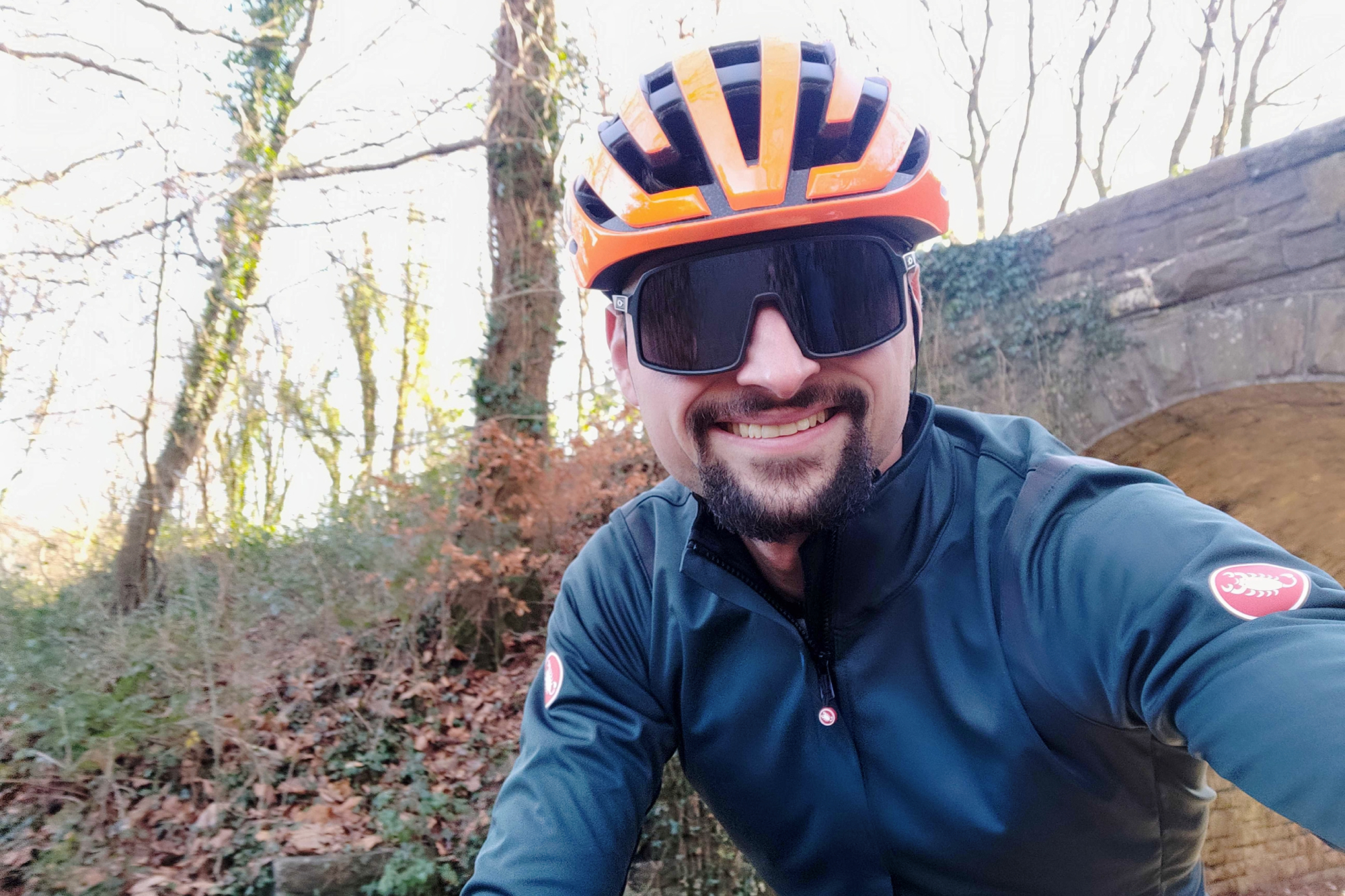
Although ostensibly quite similar, there’s quite a few points of difference between the new Z1 and the outgoing model. Aesthetically, the lines of the new model are more rounded, less angular and more flowing - all of which feeds into a more modern look.
More significantly, the new Z1 has less material around the temples, which means that the helmet doesn’t intrude on your vision. The way the previous Z1 fitted on my head meant that I could see quite a bit of the helmet out of the corner of my eyes as I was riding along. Alongside these changes, the sunglasses docking has been greatly improved too - the previous iteration didn’t feel like it kept a secure grip of my sunnies when slipped into the vents, but the new Z1 was rock solid.
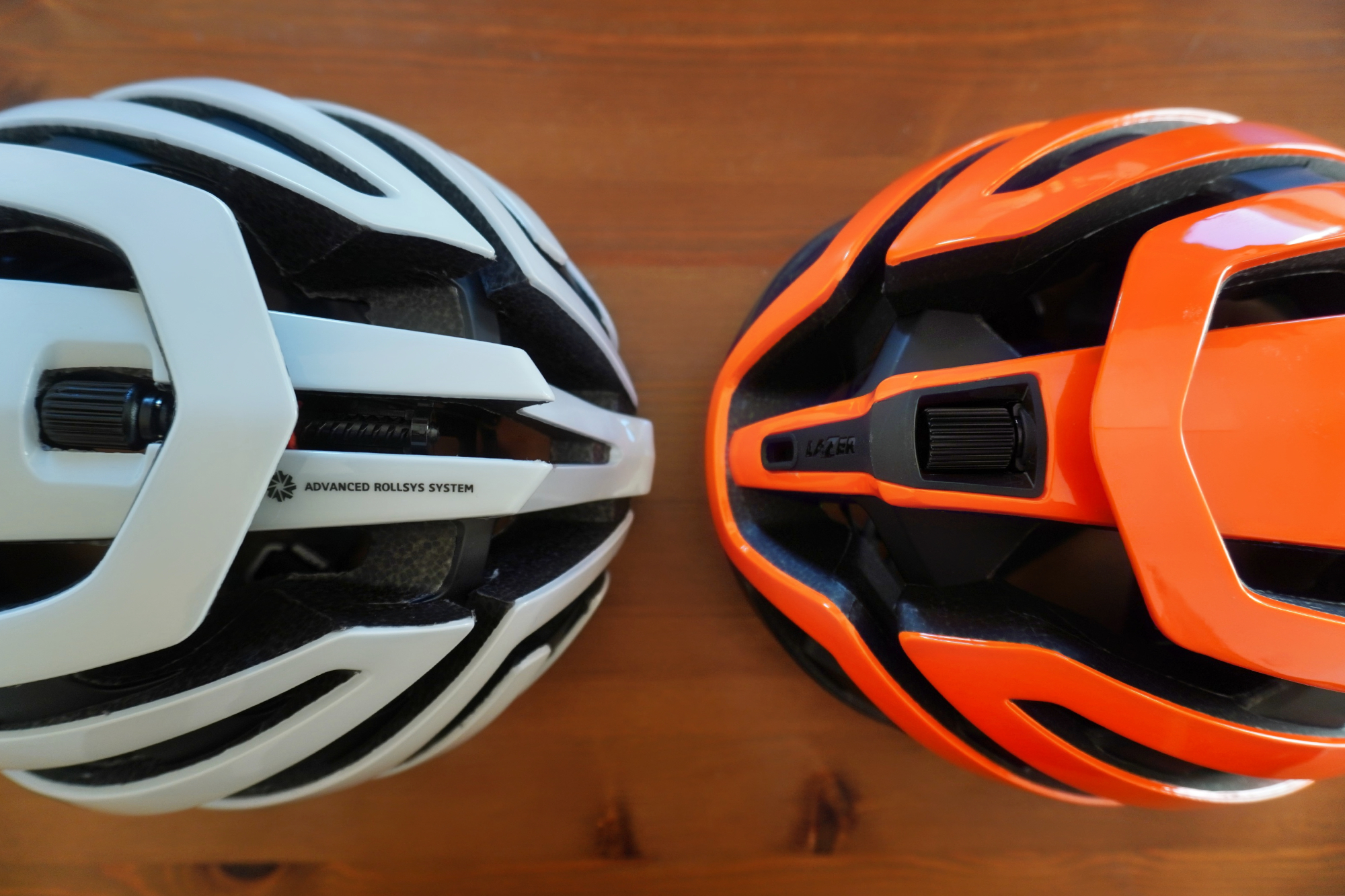
The fit in general suited my head very well. With some helmets, I find that in a size medium there can be pinching at my temples with the helmet body simple being too narrow - but sizing up to a large is just far too big. But with the Lazer Z1 (actually both the previous generation and the new) fitted my head perfectly, and felt securely in place with the retention dial tightened up whilst also not causing any pressure points. Or at least, no pressure points which became apparent within an hour’s ride - I’ll reserve judgment on that for the full review.
Being barely past midwinter, I can’t comment on the efficacy of the ventilation save from the fact that it did indeed feel cold. Bodes well for the summer, but again I’m reserving my judgment. Compatibility with Lazer’s Aeroshell is expected and a nice feature - I’m yet to get my hands on one for this helmet, but am looking forward to testing that in conjunction.
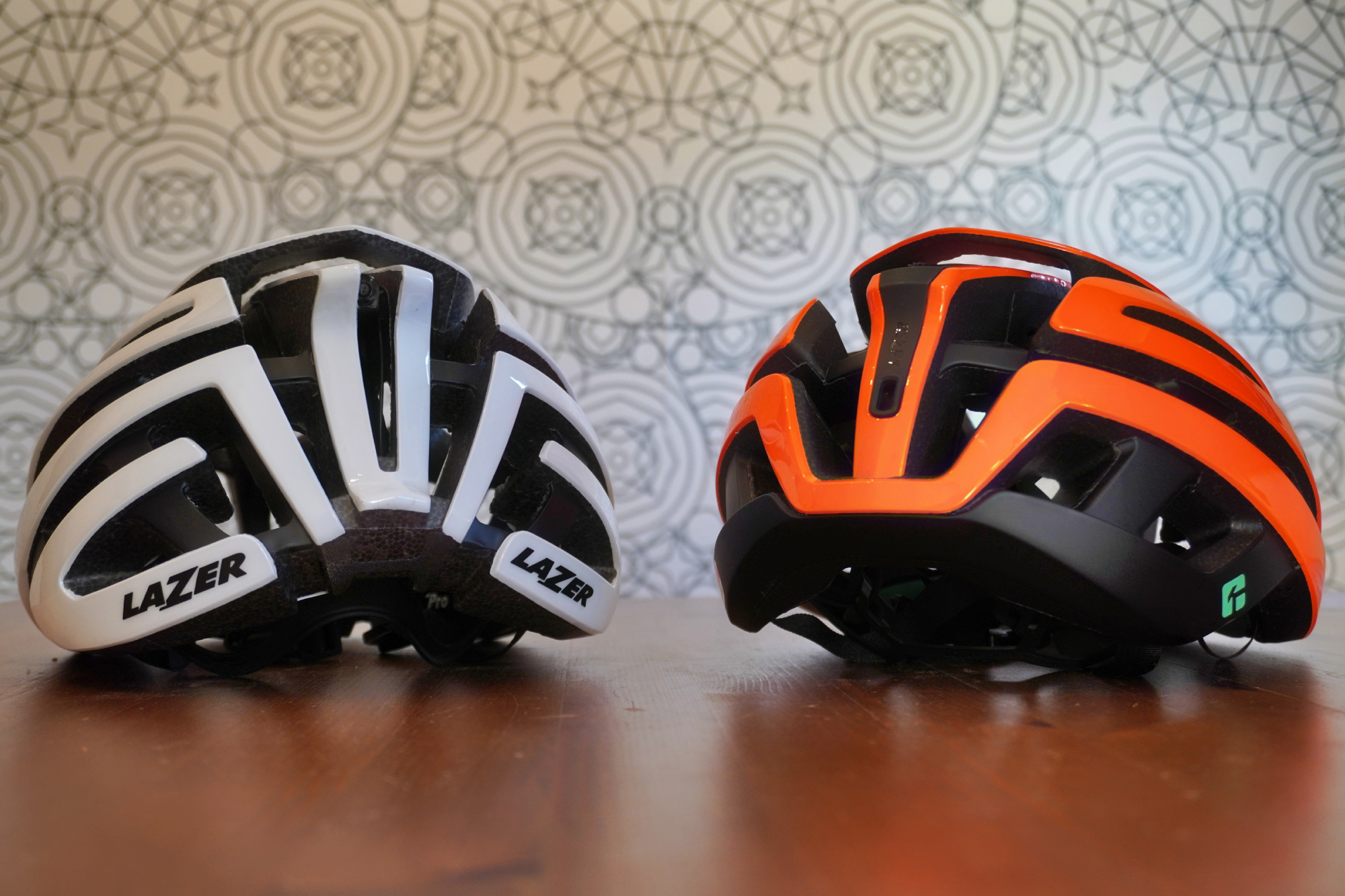
To be real, what’s likely to actually make the biggest difference to my riding is the weather protection and a cosier head with the worst of the wind and rain deflected. But even so, the psychological benefit of knowing that you’ve giving yourself the best chance when it comes to taking a KOM or trying to best your average speed on a familiar loop isn’t worth discounting - even if the speeds and durations aren’t high enough for the watt savings to really register.
In all, the fit is good, the helmet itself is so light you barely notice it, the ventilation is promising and with the Aeroshell compatibility it saves you having to contemplate investing in a second helmet. It’s a solid option - aero-weenies might be unsatisfied by the lack of competitive testing - but different helmets are faster on different people anyway, so that Lazer doesn’t provide this information isn’t really worth complaining about. And the price, at $249.99 / €249.99, is actually quite reasonable for a flagship helmet - especially one as versatile as this.
A ponytail review - Anne-Marije Rook
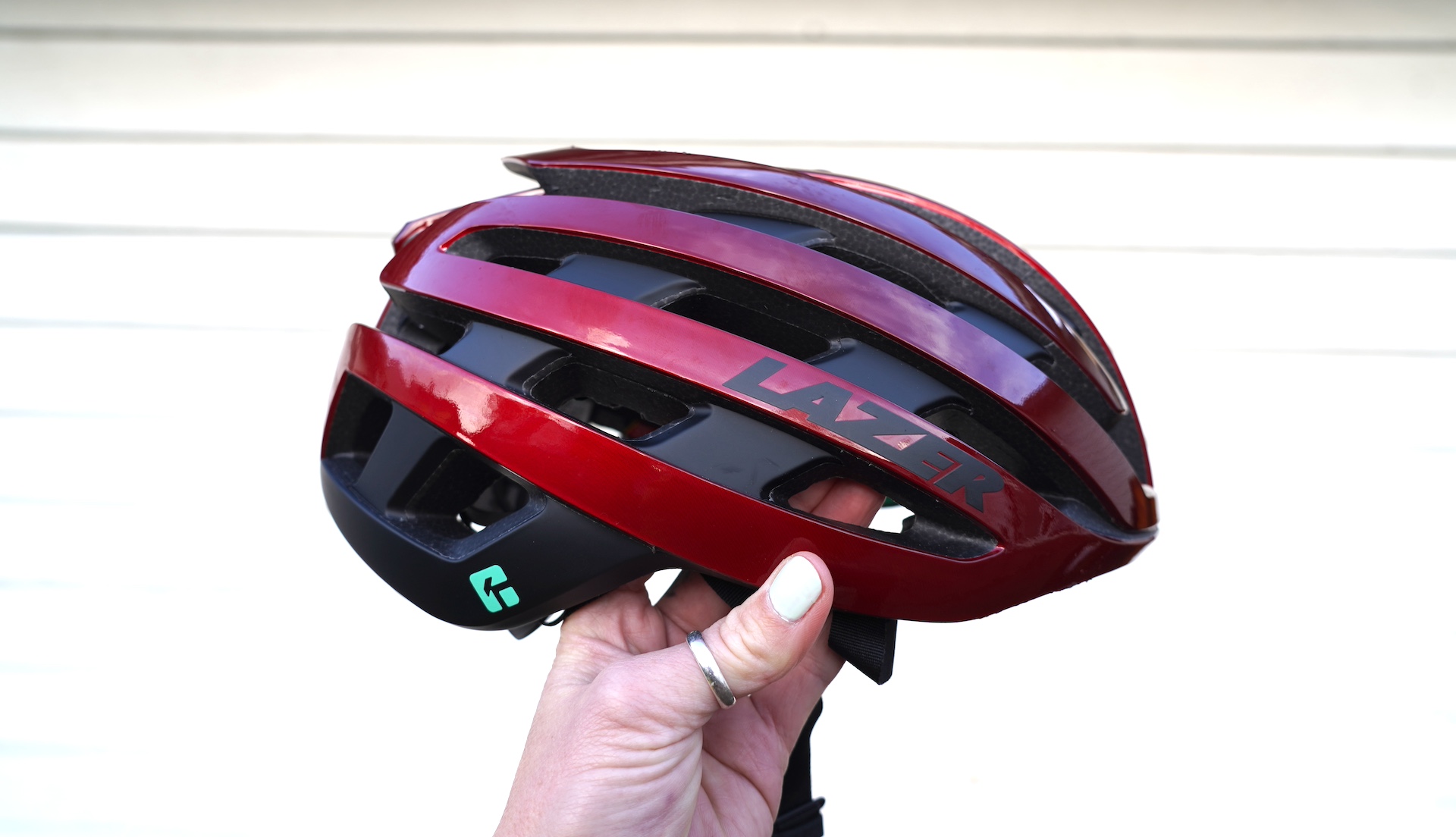
Since I, too, received a shiny red Z1 to test, I thought I'd offer a first ride review for the ponytailed or long-haired cyclists among us.
Not all cycling helmets were designed with long hairdos in mind, and the retention systems on some are significantly more ponytail-friendly than others. To accommodate the extra hair volume or a ponytail specifically, some brands opt for a big gap in the retention system on the back of the head to pull the ponytail through. Others, like Lazer, opt to route the retention system around the potential location of a ponytail.
Lazer's Advanced RollSys system actually sits on top of the helmet with a dial integrated in the tail end. Freed of the need for a ratcheting system at the back of the head, this design allows enough room for long hair to sit below the helmet's retention straps.
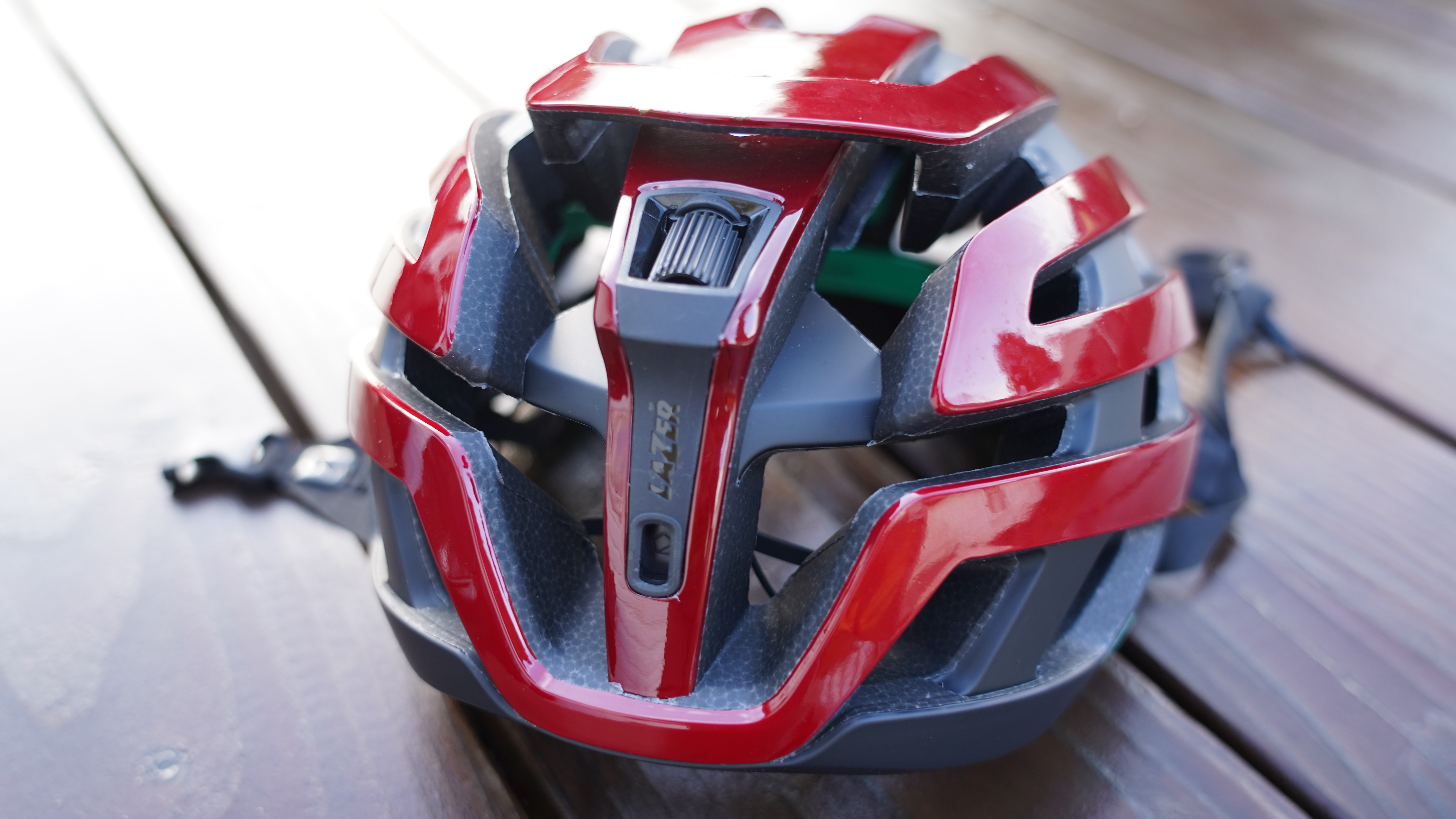
The Z1 sits pretty shallow in general, and as a result, the back of the helmet doesn't drop down very far at the back of the head at all. Indeed, I found there to be plenty of room for a ponytail or bun. The thin plastic retention strap routes comfortably above it, free of interference. That said, I did size up to a Medium to accommodate my hair's volume.
The other thing to note is that the new Z1 features Lazer's KinetiCore technology. Much like MIPS, KinetiCore is an anti-rational safety device aimed at reducing rotational force that goes through the head in case of a crash and, thereby reducing the risk of a concussion. While MIPS systems often come in the shape of a separate —often yellow-colored
—layer on the inside of the helmet, Lazer's proprietary KinetiCore is an integrated safety system consisting of a series of small, elastic inserts within the helmet's EPS foam. These inserts are strategically placed to help manage and absorb rotational and linear impact forces during a crash or collision. The technology allows the helmet to shift slightly upon impact, dispersing and absorbing energy before it reaches the cyclist's head.
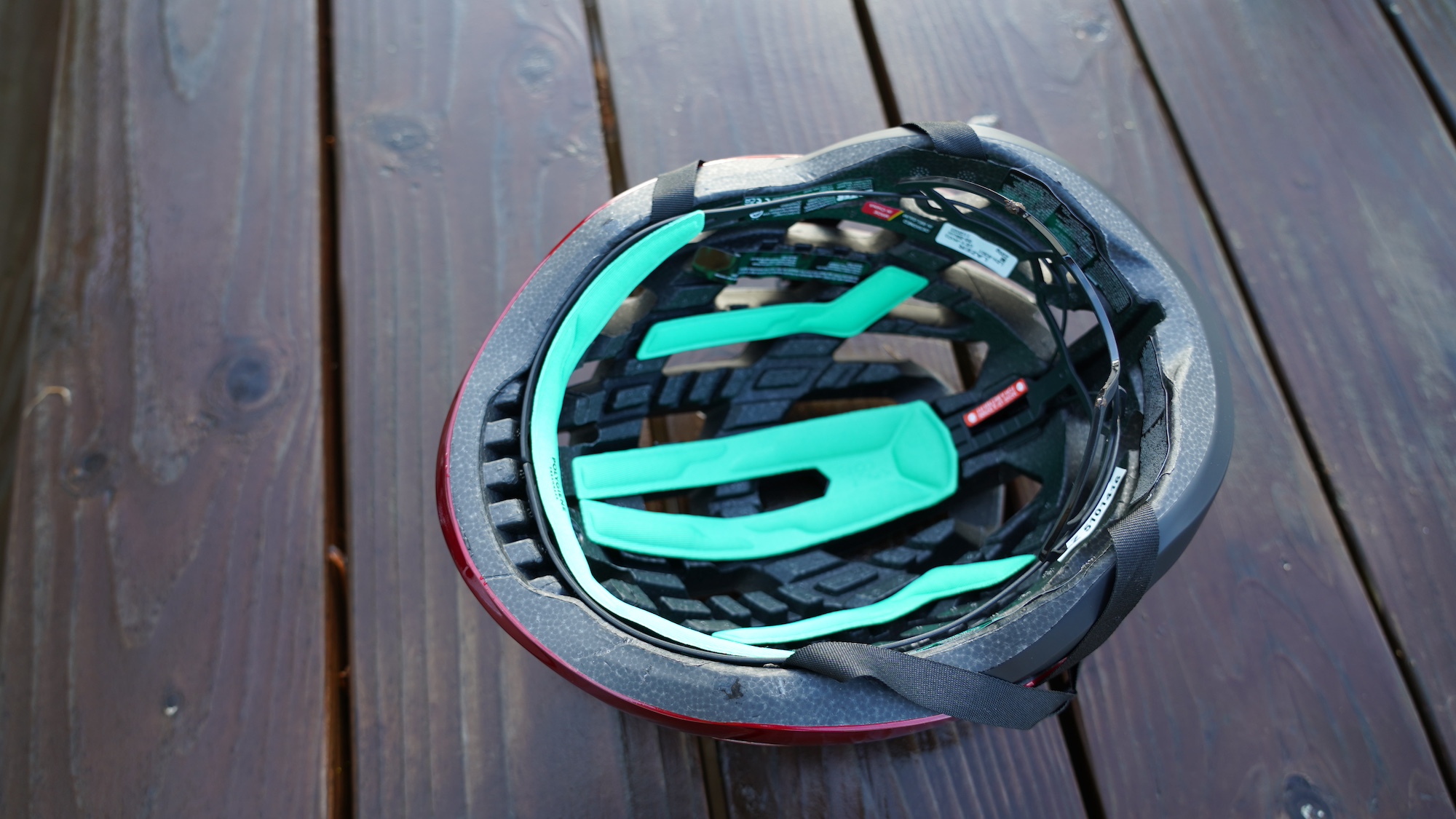
The KinetiCore technology not only carries a five-star safety rating from Virginia Tech, but it also reduces the use of plastic, is lighter than MIPS, and improves airflow through the helmet. And, because the technology lies within the EPS foam, you're no longer snagging your hair and ripping out strands when removing your helmet.
The heart of winter isn't an ideal time to be testing helmets, especially the airflow and coolness of the helmet, but my first ride impressions of the Z1 KinetiCore helmet from a ponytailed cyclist are favorable. Weighing in at 233 grams on my kitchen scale, the Z1 is noticeably light and sports plenty of room for long hair. Aesthetically, I like the more rounded lines of the updated design.
When it comes to the fit, I do find it a tad short. I've got ample room at the sides of the helmet, yet I find that I develop a pressure point on my forehead about an hour into the ride, even when being gentle with the retention system. The post-ride forehead mark is also quite substantial yet sizing up would make the helmet entirely too wide and large.

Thank you for reading 20 articles this month* Join now for unlimited access
Enjoy your first month for just £1 / $1 / €1
*Read 5 free articles per month without a subscription

Join now for unlimited access
Try first month for just £1 / $1 / €1
Get The Leadout Newsletter
The latest race content, interviews, features, reviews and expert buying guides, direct to your inbox!

After winning the 2019 National Single-Speed Cross-Country Mountain Biking Championships and claiming the plushie unicorn (true story), Stefan swapped the flat-bars for drop-bars and has never looked back.
Since then, he’s earnt his 2ⁿᵈ cat racing licence in his first season racing as a third, completed the South Downs Double in under 20 hours and Everested in under 12.
But his favourite rides are multiday bikepacking trips, with all the huge amount of cycling tech and long days spent exploring new roads and trails - as well as histories and cultures. Most recently, he’s spent two weeks riding from Budapest into the mountains of Slovakia.
Height: 177cm
Weight: 67–69kg
- Anne-Marije RookNorth American Editor
-
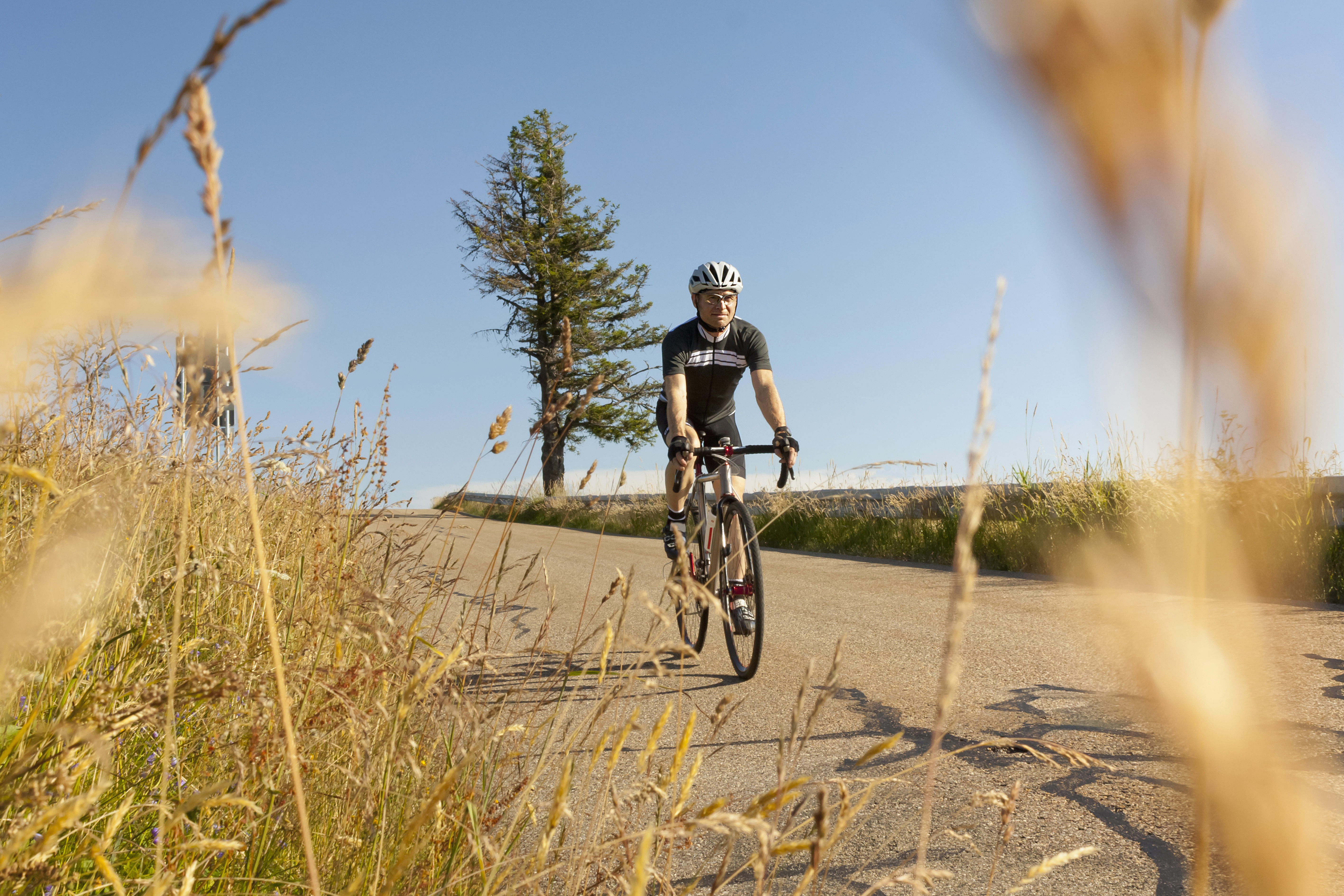 Hayfever and your riding: how to combat it as the pollen strikes
Hayfever and your riding: how to combat it as the pollen strikesExplanations, medications and holistic measures to make your spring and summer riding more enjoyable
By James Shrubsall
-
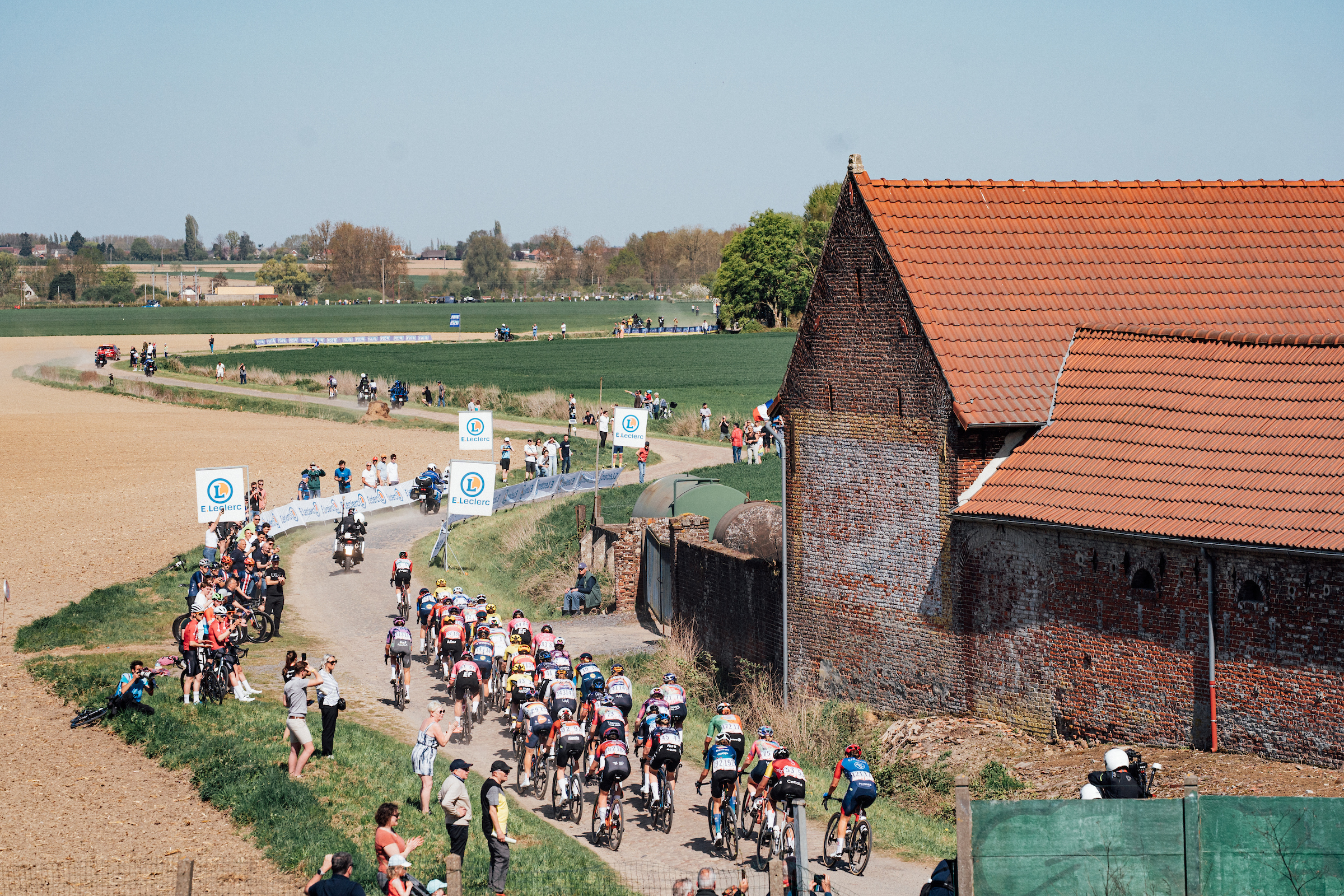 I went to Paris-Roubaix Femmes and was shocked at how it is still treated as secondary to the men’s race
I went to Paris-Roubaix Femmes and was shocked at how it is still treated as secondary to the men’s raceThe women’s version of the Hell of the North is five years old, but needs to be put more on equal footing with the men
By Adam Becket